Human Orbital Spaceflights
![]()
International Flight No. 169STS-64Discovery (19)64th Space Shuttle missionUSA |
 |
 |
 |
||
![]()
Launch, orbit and landing data
walkout photo |
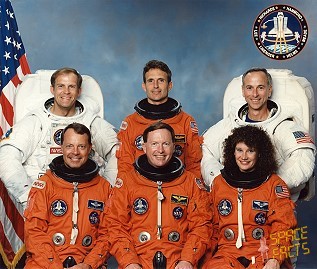 |
||||||||||||||||||||||||||||
alternative crew photo |
Crew
| No. | Surname | Given names | Position | Flight No. | Duration | Orbits | |
| 1 | Richards | Richard Noel "Dick" | CDR | 4 | 10d 22h 49m 56s | 176 | |
| 2 | Hammond | Lloyd Blaine, Jr. | PLT | 2 | 10d 22h 49m 56s | 176 | |
| 3 | Linenger | Jerry Michael | MS-1. IV-1 | 1 | 10d 22h 49m 56s | 176 | |
| 4 | Helms | Susan Jane | MS-2, RMS, FE | 2 | 10d 22h 49m 56s | 176 | |
| 5 | Meade | Carl Joseph | MS-3. EV-2 | 3 | 10d 22h 49m 56s | 176 | |
| 6 | Lee | Mark Charles | MS-4, PLC, EV-1 | 3 | 10d 22h 49m 56s | 176 |
Crew seating arrangement
|
 |
|
||||||||||||||||||||||||||||
Hardware
| Orbiter : | OV-103 (19.) |
| SSME (1 / 2 / 3): | 2031 (11.) / 2109 (13.) / 2029 (10.) |
| SRB: | BI-068 / RSRM 41 |
| ET: | ET-66 (LWT-59) |
| OMS Pod: | Left Pod 01 (22.) / Right Pod 03 (20.) |
| FWD RCS Pod: | FRC 3 (19.) |
| RMS: | 201 (13.) |
| EMU: | EMU No. 2032 (PLSS No. 1003) / EMU No. 2029 (PLSS No. 1009) |
Flight
|
Launch from Cape Canaveral (KSC) and
landing on the Edwards
AFB, Runway
04. The primary payload was the LIDAR In-Space Technology Experiment (LITE). LIDAR stands for light detection and ranging, a type of optical radar using laser pulses instead of radio waves to study Earth's atmosphere. LITE instrument operated for 53 hours, yielding more than 43 hours of high-rate data. Unprecedented views were obtained of cloud structures, storm systems, dust clouds, pollutants, forest burning and surface reflectance. Sites studied included atmosphere above northern Europe, Indonesia and the south Pacific, Russia and Africa. Sixty-five groups from 20 countries are making validation measurements with ground-based and aircraft instruments to verify LITE data. LITE science program was part of NASA's Mission to Planet Earth. The LITE instrument was mounted to a pallet inside the open payload bay of Discovery, which orbited "upside-down" (with the bay pointed toward Earth). Discovery flew at a relatively low altitude (about 160 miles or 260 kilometers), so that each downward-pointing lidar pulse was dispersed as little as possible on its way down through the atmosphere. Over its planned nine-day mission, LITE collected atmospheric information during ten 4 ½ hour sessions, for a total of 45 hours. In addition, five 15-minute "snapshots" were performed over specific target sites. LITE's observing targets included clouds, particles in the atmosphere, the planetary boundary layer (where the atmosphere meets the Earth's surface), density and temperature in the upper atmosphere and the Earth's surface. The LITE payload was built at NASA's Langley Research Center, Hampton, Va. The receiver included a one-meter telescope (approximately 3.25 feet = 1,0 meter) and an aft optics package. The telescope collected laser light reflected from the atmosphere and brought it to focus in the aft optics. The aft optics separated the return signal into its three-color components. The 532 nanometer (visible green) and 355 nanometer (ultraviolet) detectors were photomultiplier tubes, while the 1064 nanometer (infrared) detector was a silicon avalanche photodiode. An existing NASA telescope, which was an engineering model of the Orbiting Astronomical Observatory from Goddard Space Flight Center that flew in 1968, was used as the lidar receiver. The use of this existing hardware saved NASA an estimated $8 million. The boresight assembly consisted of a two-axis motor-driven prism. Its purpose was to align the laser beam to the telescope field-of-view so that both point to the same column of atmosphere. The LTM consisted of two flash lamp-pumped, Q-switched Neodymium YAG lasers which emitted simultaneously at the three harmonically related wavelengths of 1064 nanometers, 532 nanometers, and 355 nanometers. The two-laser system provided redundancy in case one laser fails. Only one laser operated at a time. The OASIS-1 measured and internally record accelerations, acoustic loads, strains temperatures, thermal flux and pressures during the launch, ascent, on orbit, descent, and landing phases of the LITE mission. A special modified 35-mm camera photographed daytime cloud cover and ground tracks every 20 seconds to help interpret the lidar data. The LITE instrument was mounted on an orthogrid platform which was attached to the Spacelab pallet by 52 struts. The orthogrid was a support platform for the instrument subsystems and was designed to be immune to thermal deformations which could affect optical alignment. The Instrument Controller handled all command and data interfaces of the LITE instrument. All subsystems could be commanded and controlled via the controller. Health and status of the LITE instrument were monitored and transferred to the Spacelab's Smart Flexible Multiplexer/Demultiplexer. The controller software consisted of over 18 real-time tasks that perform all commands and data interfaces for the controller as well as independent operations. Another payload of STS-64 was SPARTAN-201. The SPARTAN program was designed to provide easy access to Earth orbit via the Space Shuttle for flying science experiments. SPARTAN used proven technologies to provide a relatively inexpensive route to space for the scientific community. This was done by using a basic carrier which, with the addition of a science experiment, becomes a complete spacecraft capable of fulfilling the science objectives of each mission. SPARTAN missions can support stellar, solar, or Earth fine-pointing experiments, experiments requiring microgravity and experiments requiring space environments away from the Space Shuttle. SPARTAN-201 studied the acceleration and velocity of the solar wind and measured aspects of the Sun's corona. Results should suggest solutions to the questions of coronal and solar wind physics with dramatic observations. The SPARTAN-201 looked for evidence to explain how the solar wind is generated by the Sun. The solar atmosphere constantly ejects electrons, protons and heavy ions from the outer layer, continuously impacting the Earth. The solar wind fills interplanetary space and sweeps by the Earth at nearly one million miles per hour (1.6 million km/hour). The wind often gusts, transmitting disturbances from the Sun that frequently disrupt navigation, communications and electric power distribution systems on Earth. The scientific observations were recorded on board SPARTAN-201 and analyzed by scientists and engineers after recovery on the ground. The SPARTAN carrier and instrument was reflown on STS-72 in January 1996. This flight was timed to coincide with the Ulysses spacecraft passage over the north pole of the Sun. . The dual-telescope science payload was mounted aboard the SPARTAN carrier. When the Shuttle was on orbit and the payload bay doors were open, Susan Helms used the robot arm to lift SPARTAN from the payload bay and released it over the side of the Shuttle. It was deployed from the Shuttle so that it could operate independently, turning and pointing at the Sun, while leaving the orbiter free for other activities. Additionally, because the SPARTAN and Shuttle became separated, the SPARTAN was able to view the Sun clear of any contamination which might be generated by Shuttle thruster firings. For approximately 40 hours, SPARTAN-201's instruments observed the Sun as the Space Shuttle paced it from behind. About four hours prior to the scheduled retrieval, the Shuttle performed engine firings allowing it to close on SPARTAN-201, eventually passing directly below it before Blaine Hammond manually flew the final few hundred feet (approximately 100 meters) to allow the satellite to be grasped by the robot arm with Susan Helms at the controls. Once caught by the arm, SPARTAN-201 was stowed back in the cargo bay to be returned to Earth. The only EVA in this mission was performed by Carl Meade and Mark Lee on September 16, 1994 (6h 51m) to evaluate the Simplified Aid for EVA Rescue (SAFER), several spacewalking tools, and an Electronic Cuff Checklist developed to allow spacewalkers greater and easier access to information. SAFER, designed and developed by the Johnson Space Center in a team project led by the Automation and Robotics Division, is a small, self-contained, propulsive backpack device that can provide free-flying mobility for a spacewalker in an emergency. It is designed for self-rescue use by a spacewalker in the event the Shuttle is unable or unavailable to retrieve a detached, drifting crew member. Examples of such times may include a mission where the Shuttle is docked to the Russian Mir Space Station or to the International Space Station. SAFER is attached to the spacesuit's Portable Life Support System backpack, and is, in essence, a scaleddown, miniature version of the Manned Maneuvering Unit propulsion backpack flown aboard Shuttle missions in 1984. It is designed for emergency use only, but without built- in backup systems. SAFER's propulsion is provided by 24 fixed-position thrusters that expel nitrogen gas and have a thrust of .8 lbs. (0.4 kg) each. Stowed in the crew cabin for launch and landing, SAFER's nitrogen supply can be recharged in orbit from the Shuttle's nitrogen system. SAFER's three-pound supply of nitrogen can provide a ten-foot-per-second change in velocity for the operator before it is exhausted. Its attitude control system includes an automatic attitude hold and six degrees of freedom. A 28-volt battery pack for SAFER can be replaced in orbit. For STS-64, first Mark Lee, and then Carl Meade, evaluated SAFER through four test sequences: A SAFER familiarization, a system engineering evaluation, a rescue demonstration, and a flight qualities evaluation. The SAFER flight operations were conducted without a tether attached to the Shuttle. The familiarization had the SAFER spacewalker performed several short single-axis translation and then rotation commands. They were performed first with the unit's automatic attitude hold "on" and again with the attitude hold "off". Next, the spacewalker flew a square trajectory within the Shuttle payload bay, recording the percent of nitrogen used both before and after the maneuver to compare the actual use with what had been predicted. For the engineering evaluation, the spacewalker flew several short translation commands, for example, a one-second thrust forward, five seconds of coasting, and a one-second braking thrust. The same type of command was done for rotations as well, and a data recorder in the SAFER retained all measurements of the unit's performance for study on the ground after the mission. Between each test sequence, SAFER were recharged with nitrogen from the Shuttle's nitrogen supply via a SAFER Recharge Station mounted in the forward portion of the cargo bay. In addition, before the unit was switched from Mark Lee to Carl Meade, the SAFER battery was changed. Throughout the spacewalk, Mark Lee and Carl Meade evaluated several new and some improved spacewalking tools. These included quick-release tether hooks and wrist tethers, push-button portable foot restraints, a rigid tether, modified handrails and an articulating portable foot restraint. Except for the articulating portable foot restraint, which had specific time scheduled for its evaluation, these tools were evaluated by the spacewalkers as they use them to work on the SAFER tests. One new piece of spacewalking equipment worn and evaluated by both Mark Lee and Carl Meade is called the Electronic Cuff Checklist (ECC). The Electronic Cuff Checklist, developed by the Johnson Space Center's Crew and Thermal Systems Division, attached to the lower arm of a spacesuit and can hold more than 500 pages of information, including graphics and even photographs, to display on a 3-by-4-inch (7.6-by-10.2 centimeters) screen. Roughly the same size as the current printed checklist, the two-and- a-half-pound, battery-powered unit is an inch deep at its thickest point. On STS-64, Mark Lee and Carl Meade each wore the Electronic Cuff Checklist on the left arm of the spacesuit and a standard, printed checklist on the right arm. The electronic checklist included the information on the printed checklist plus additional information, including the spacewalk timeline and complete SAFER evaluation procedures. The electronic checklist was evaluated in parallel with the other spacewalk operations on its size, weight, viewability, accessibility of information, attachment to the suit and general operation. In addition, after the spacewalk was completed, new pages of information were transferred to the unit from the laptop computer aboard Discovery to test that capability. The Shuttle Plume Impingement Flight Experiment (SPIFEX) studied the characteristics and behavior of exhaust plumes from Discovery's Reaction Control System (RCS) thrusters during STS-64. SPIFEX, when picked up by Discovery's mechanical arm, was a 33-foot (10.06 meters) long extension for the arm with a package of instruments that measured the near-field, transition and far-field effects of thruster plumes. The plume information gathered by the experiment assisted planners in understanding the potential effects of thruster plumes on large space structures, such as the Russian Space Agency's Mir Space Station and the International Space Station, during future Shuttle docking and rendezvous operations. During STS-64, SPIFEX was moved by a series of complex mechanical arm maneuvers to take measurements of 86 separate test firings of the Shuttle's RCS thrusters at 60 different locations. The majority of locations had SPIFEX either above the nose of Discovery, in front of the nose, or at the rear of the spacecraft near the left Orbital Maneuvering System pod. Operations of the experiment were scheduled on four different flight days of the mission and were planned to gather a total of 12 to 14 hours of data during the flight. The SPIFEX instruments were comprised of three basic systems: A Load Measurement System; a Plume Impingement Characterization System; and a Position and Orientation Verification System. The load measurements obtained information on the pressures that might be imparted by the jet plumes to delicate structures such as solar arrays, while the characterization measurements detailed the concentrations of contaminants from exhaust plumes. All of the operations were done at a variety of distances from and orientations to the Shuttle steering jets. The primary crew member for SPIFEX mechanical arm operations was Susan Helms, although the experiment required two additional crewmembers during each data take - one to operate the laptop computer (Mark Lee) and another to perform the jet firings (Blaine Hammond). The purpose of NASA's Robot Operated Materials Processing System (ROMPS) was to improve the properties of materials by processing them in space. The performance, and consequently the commercial value, of most semiconductor materials is highly dependent on their crystalline structure. Gravity driven connection and sedimentation, which disturb crystal formation, can be eliminated in the microgravity environment of space. ROMPS was the first U.S. robotics system to be used in space. ROMPS will advance microgravity processing by using a robot to transport each of a large variety of semiconductors from the storage racks to halogen lamp furnaces where their crystal structures are re-formed in heating and cooling cycles. ROMPS was contained in two Space Shuttle sidewall mounted Get Away Special (GAS) cans, one containing the robot, furnaces and samples; the other containing control electronics. The Hitchhiker avionics system provided ROMPS with power, ground commands and telemetry. The ROMPS samples were analyzed on the ground after the Shuttle mission, and the results were used to define materials and processing for planned reflights of ROMPS on future Shuttle missions. The ROMPS robot transferred each of approximately 150 sample pallets from its storage location to a processing furnace and back to its storage location. The robot had three degrees of freedom and a gripper. The robot's three positional axes (elevation, azimuth, radial) and the gripper were position-controlled and force limited. Each robot axis incorporated a brushless DC motor drive, incremental position encoder, brake, gearing, and end-of-travel monitors. The gripper was activated like the robot axes except that it did not have a brake because it was not back-drivable and its position was monitored using sensors. Only one motor at a time was powered during operation. Transfer time for each sample between the storage rack and furnace was less than two minutes. The robot was unpowered and braked during heating cycles so as not to disturb the sample being processed. The Office of Naval Research (ONR) was sponsoring the Military Applications of Ship Tracks (MAST) experiment on STS-64. MAST was part of a five-year research program developed by ONR to examine the effects of ships on the marine environment. The Naval Postgraduate School, Monterey, Calif., conducted the experiment at JSC during the mission. The objective of MAST was to determine how pollutants generated by ships modify the reflective properties of clouds. Ship tracks were observed in satellite imagery as long, narrow, curvilinear cloud features that have greater brightness than the surrounding clouds. The STS-64 crew photographed ship tracks using handheld cameras. These high-resolution photographs provided insight into the processes of ship track production on a global scale. MAST helped in understanding the effects of man-made aerosols on clouds and the resulting impact on the climate system. MAST was a Department of Defense payload and was being flown under the direction of the DOD Space Test Program. The Air Force Maui Optical Site (AMOS) tests allowed ground-based electro-optical sensors located on Mt. Haleakala, Maui, Hawaii, to collect imagery and signature data of the orbiter during cooperative overflights. The scientific observations made of the orbiter, while performing reaction control system thruster firings, water dumps or payload bay light activation or the phenomena of "Shuttle glow", a well-documented fluorescent effect created as the Shuttle interacts with atomic oxygen in Earth orbit, and were used to support the calibration of the AMOS sensors and the validation of spacecraft contamination models. The AMOS tests had no payload unique flight hardware and only required that the orbiter be in predefined attitude operations and lighting conditions. The purpose of the Solid Surface Combustion Experiment (SSCE) was to study the physical and chemical mechanisms of flame propagation over solid fuels in the absence of gravity-driven buoyant or externally-imposed airflows. The controlling mechanisms of flame propagation in microgravity are different than in normal gravity. On Earth, gravity causes the air heated by the flame to rise. This air flow, called buoyant convention, feeds oxygen to the flame and cools the fire, creating competing effects. In microgravity, this flow is absent. Therefore, the fire is sustained only by the oxygen that it consumes as it migrates along the fuel's surface. The results of the SSCE have a practical application in the evaluation of spacecraft fire hazards, as well as providing a better understanding of flame propagation in microgravity and on Earth. The experiment consisted of two parts - the chamber module and the camera module. The chamber module consisted of a sealed combustion chamber which housed the sample and was filled with a combination of oxygen and nitrogen. The chamber had two perpendicular viewports - one on the side and one on the top. During the STS-64 mission, a small sample of PMMA, or Plexiglas, was burned in a mixture of 50 percent oxygen and 50 percent nitrogen at twice normal atmospheric pressure. Research on the development and differentiation of a major food crop family that provides half of the world's calorie intake from plants, was the subject of the second Biological Research in Canisters (BRIC-2) experiment on STS-64. Microgravity research on orchard grass, which is part of the plant family that includes wheat, rice and corn, possibly will provide critical insights into the reproductive biology of the world's major food crops. On STS-64, for the first time, basic microgravity research on a member of the grass family was performed. Leaf cultures were grown in a fixed nutrient "soil" as opposed to having to be placed in suspension. Leaf sections were be split providing for excellent research controls and statistical analysis. Finally, a fixed number of the seeds developed fully and were germinated and grown to full plants for further research. All portions of the orchard grass, such as leaf, veins, etc., were analyzed to understand the development and life cycle of the plant. As part of the Shuttle Amateur Radio Experiment (SAREX) students in the United States and other countries had a chance to speak via amateur radio with astronauts aboard the Space Shuttle Endeavour during STS-64. Ground-based amateur radio operators ("hams") were able to contact the Shuttle through automated computer-to-computer amateur (packet) radio links. There also were voice contacts with the general ham community as time permitted. Shuttle Commander Richard Richards (KB5SIW), pilot Blaine Hammond (KC5HBS) and mission specialist Jerry Linenger (KC5HBR) talked with students in 10 schools in the U.S. and New Zealand using "ham radio". The Radiation Monitoring Equipment-III (RME-III) measured ionizing radiation exposure to the crew within the orbiter cabin. RME-III measured gamma ray, electron, neutron and proton radiation and calculated in real time exposure in RADS-tissue equivalent. The information was stored in a memory module for post-flight analysis. The hand-held instrument was stored in a mid-deck locker during flight except for when the crew activated it and replaced the memory module every two days. RME-III was activated by the crew as soon as possible after they achieve orbit, and it operated throughout the mission. A crew member entered the correct mission elapsed time upon activation. Due to saving energy and fuel while the mission managers decided to extend the flight for one day. Meanwhile the weather in Florida was too bad for any landing there and the mission was extended for another day. On September 20, 1994 the weather in Florida was still bad. The NASA managers decided to take the first landing opportunity on the Edwards AFB in California. |
EVA data
| Name | Start | End | Duration | Mission | Airlock | Suit | |
| EVA | Lee, Mark | 16.09.1994, 14:42 UTC | 16.09.1994, 21:33 UTC | 6h 51m | STS-64 | Discovery | EMU No. 2032 |
| EVA | Meade, Carl | 16.09.1994, 14:42 UTC | 16.09.1994, 21:33 UTC | 6h 51m | STS-64 | Discovery | EMU No. 2029 |
Photos / Graphics
 |
 |
 |
 |
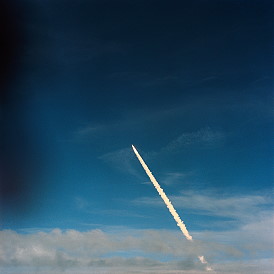 |
 |
 |
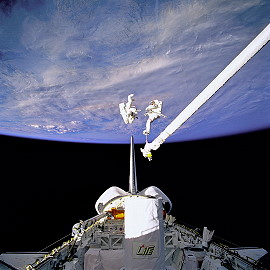 |
 |
 |
 |
 |
 |
 |
 |
 |
 |
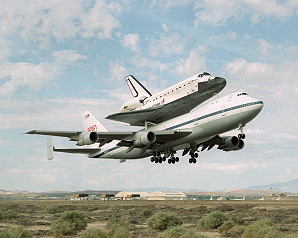 |
more EVA photos |
|
| © |  |
Last update on June 19, 2023.  |
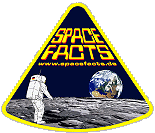 |